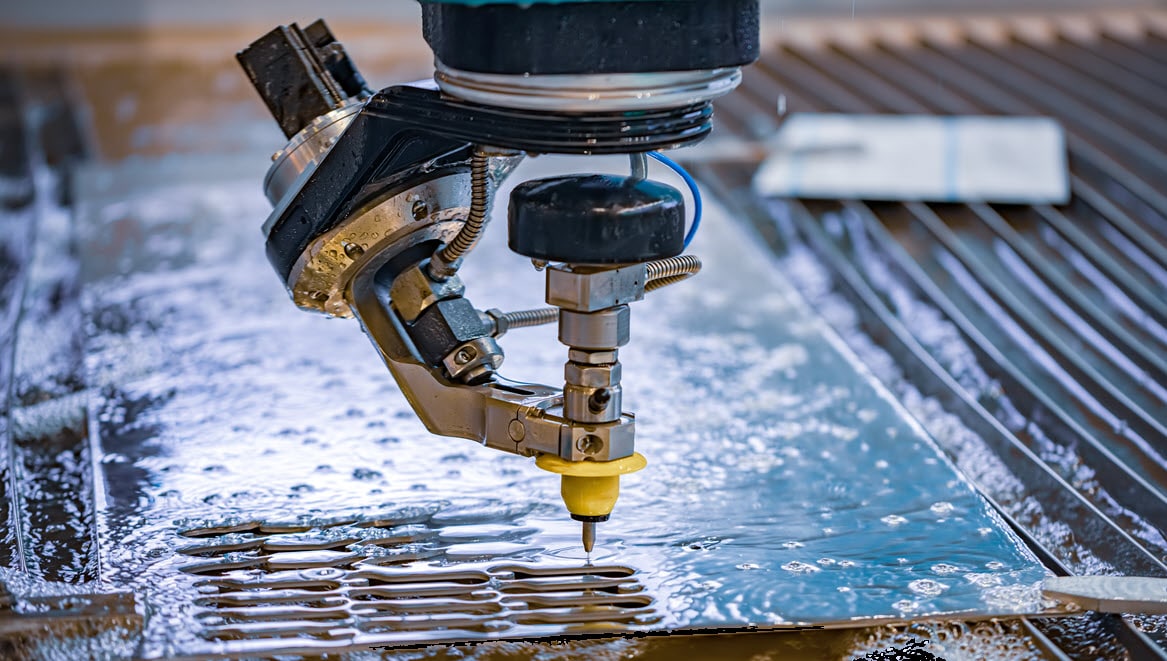& Construction

Integrated BIM tools, including Revit, AutoCAD, and Civil 3D
& Manufacturing

Professional CAD/CAM tools built on Inventor and AutoCAD
Sheet metal design is the process of engineering sheet metal into equipment, parts, assemblies, and products. Autodesk Fusion 360 provides the necessary software to automate sheet metal design (US Site), nest your components, and create tool paths for CNC.
Sheet metal design software is calibrated for the design, engineering, and manufacturing of sheet metal components and products. It provides tools and features that aid in the creation, modification, and optimization of sheet metal parts, as well as the generation of manufacturing instructions and documentation.
A flange is a common sheet metal feature, which consists of a bend connected to stationary face, along a straight edge.
Bend calculations make sure that the correct length is calculated when a sheet metal design is manufactured flat and then bent into its finished state based on a K-Factor.
Gauge tables define the thickness of sheet metal. There are several gauge tables depending on the material of the sheet metal, which specify the thickness for both inches and millimeters.
Sheet metal design software like Autodesk Fusion 360 includes a combination of 2D and 3D design capabilities. This allows engineers and designers to create precise models of sheet metal components. Users can define parameters such as material thickness, bend allowances, hole sizes, and other geometric features relevant to sheet metal fabrication.
Streamline your entire sheet metal design-through-fabrication workflow with one software package. Autodesk Fusion 360 allows you to connect 2D and 3D workflows so you can create, modify, and document sheet metal designs. This makes it easy to quickly get a flat pattern into production.
Autodesk Fusion 360 offers a range of specialized tools tailored for sheet metal design. These tools include bend and unfold commands, sheet metal-specific parameters, corner reliefs, flange creation, and more. These features streamline the design process and enable designers to create accurate sheet metal components.
With cloud collaboration (US Site) tools, multiple users to collaborate on the same design in real time. Cloud-based software (US Site) is especially useful for product design teams, where parts of the products are often designed and manufactured by different team members across various locations.
Autodesk Fusion 360 combines both computer-aided design (CAD) (US Site) and computer-aided manufacturing (CAM) functionalities in a single platform. This integration allows designers to seamlessly transition from creating 3D sheet metal models to generating toolpaths for manufacturing processes.
Flexible parametric modeling (US Site) techniques allow designers to create flexible and adaptive sheet metal designs. With parametric modeling, changes made to the design propagate throughout the model, automatically updating features and maintaining design intent. This feature is useful in sheet metal design, where modifications and iterations are common.
Streamline the deformation-based sheet metal forming process with the sheet metal tools in Fusion 360. The software simplifies simulating sheet metal forming with an easy setup of loading conditions, contact conditions, fixes, displacement boundary conditions, and nonlinear material properties.
Autodesk Fusion 360 supports a wide range of manufacturing processes commonly used in sheet metal fabrication, including laser cutting, punching, bending, welding, and more. Computer-aided manufacturing (US Site) generates toolpaths for these manufacturing processes, making it easier to translate designs into physical parts.
Unlock additional capabilities for 3 to 5-axis CNC machining, sheet-based nesting and fabrication, and metals-based additive manufacturing.
Learn to create, modify, and apply sheet metal rules. Learn how to use the flange tool and how to create a cutout across multiple faces. Learn how to build a flat pattern and use it in a drawing in Fusion 360.
Learn the basics of sheet metal design in Fusion 360 in the Autodesk Product Documentation portal. We cover sheet metal components, rules, flanges, bends, unfolding sheet metal bodies, and flat patterns.
Learn how to design a sheet metal model using Fusion 360. See how to parametrically edit sheet metal models and how to set up a library for sheet metal rules. Also, learn about downstream manufacturing workflows for sheet metal models.
The Autodesk Fusion 360 Nesting and Fabrication Extension (US Site) provides several benefits for users involved in sheet metal fabrication and manufacturing processes. Some key advantages include material optimization, time savings, improved production efficiency, cost reduction, design-to-manufacturing integration, and compatibility with various fabrication processes.
-Michael Mitris, Co-Founder and Director, Concrete Collective
Pressurized water mixed with abrasives can cut through stainless steel, Inconel, titanium, aluminum, tool steel, ceramics, granite, and armor plate, with a clean edge finish.
A gas laser, such as a CO2, is transmitted through a beam, guided by mirrors, and directed at the material at an extremely high level of precision.
The plasma process uses electrically conductive gas to transfer energy from a torch to the material being cut. Developed for metals that could not be flame cut, such as stainless steel, aluminum, and copper.
Sheet metal design software is the most critical component of sheet metal fabrication. Learn how designers can use the Autodesk Fusion 360 Nesting & Fabrication Extension to streamline their process.
Learn the basic concepts of sheet metal fabrication, including an overview of measurement units, manipulation techniques, and metal types.
Sheet metal is widely used due to its formability, ductility, and tensile nature. Manufacturers thus have a central goal: manipulating malleable metals accordingly while preserving structural integrity. Learn the different sheet metal forming processes and their relevance within specific industries.
There are a few ways to create sheet metal components in Autodesk Fusion 360. You can create a new sheet metal component using the sheet metal rule. The rule uses your settings for material thickness, bend radius, and corner relief. You can also create a sheet metal component from scratch. You use sketch commands to create a profile for a base face or an initial contour flange. Then you exit the sketch and create your sheet metal face and flanges. Default rule is used but you can change or edit used rule.
Autodesk Fusion 360 includes direct editing and advanced surface modeling features designed to dramatically reduce the time typically necessary for high-volume design production. Validate 3D digital models as you design without needing a prototype. Stress-test and optimize in one integrated design environment. Plus, built-in sheet metal specific commands streamline work on both folded and unfolded models.
Autodesk Fusion 360 streamlines the deformation-based sheet metal forming process. The software simplifies simulating sheet metal forming with easy setup of loading conditions, contact conditions, fixes and displacement boundary conditions, and non-linear material properties.
Files from other CAD systems can be imported (US Site) for use in Autodesk Fusion 360 and exported to other CAD system formats.
Autodesk Fusion 360 simplifies calculating bend allowance and offers the flexibility to see bending results specific to the data you have. While the default K-Factor of 0.44 is automatically built into the software, you can access the integrated editor in Inventor to create and edit bend tables.











